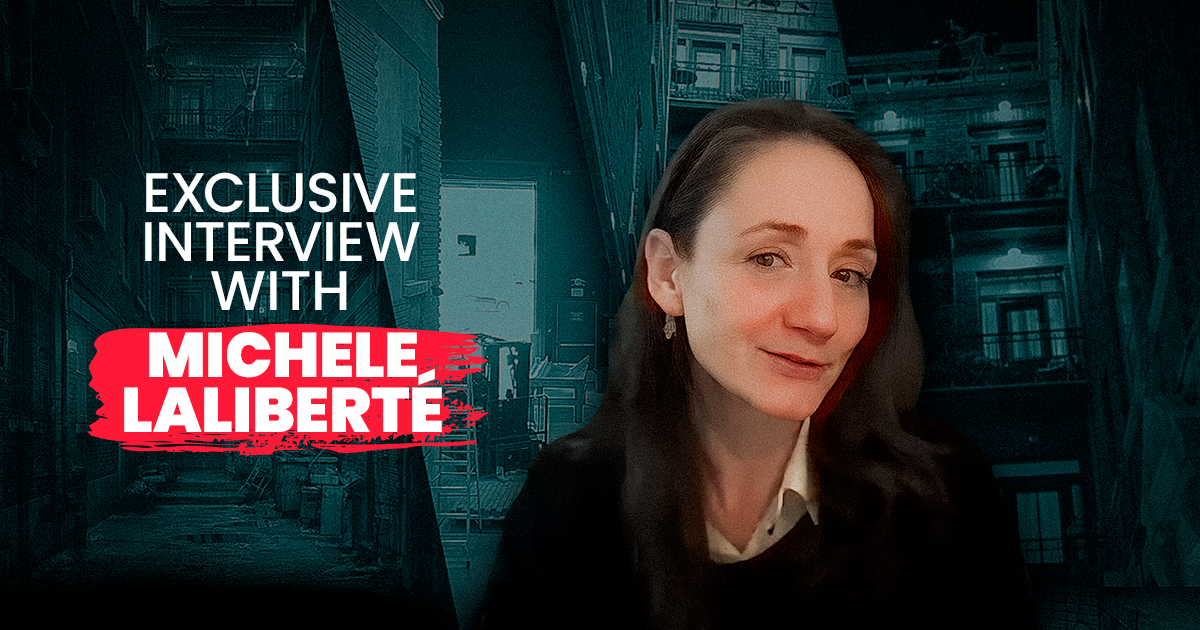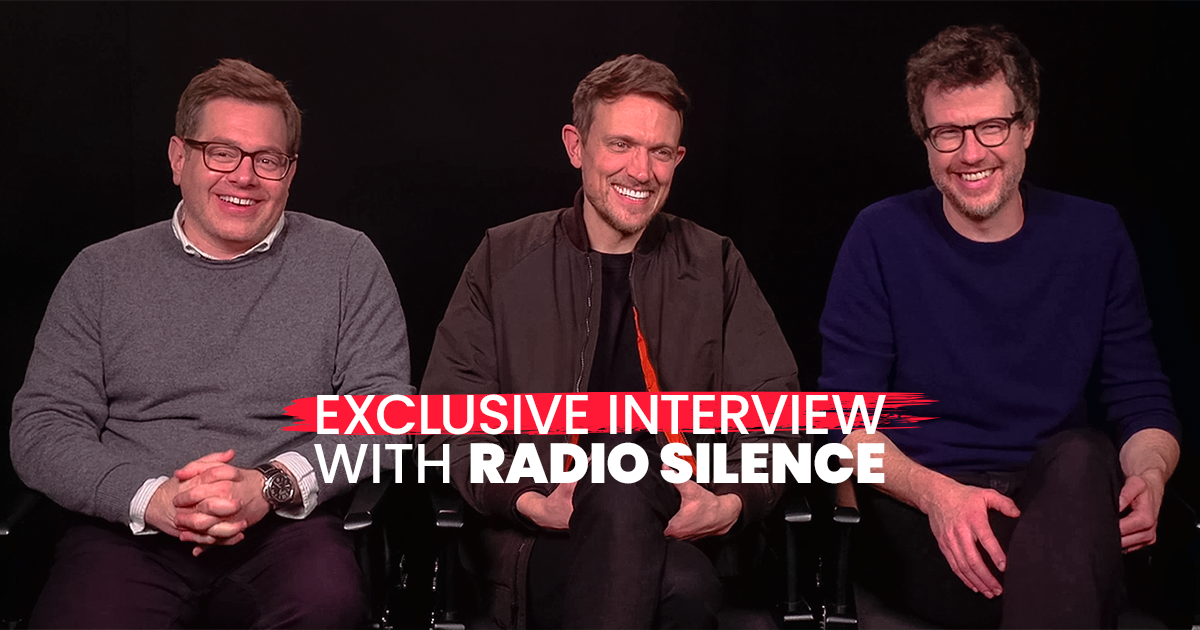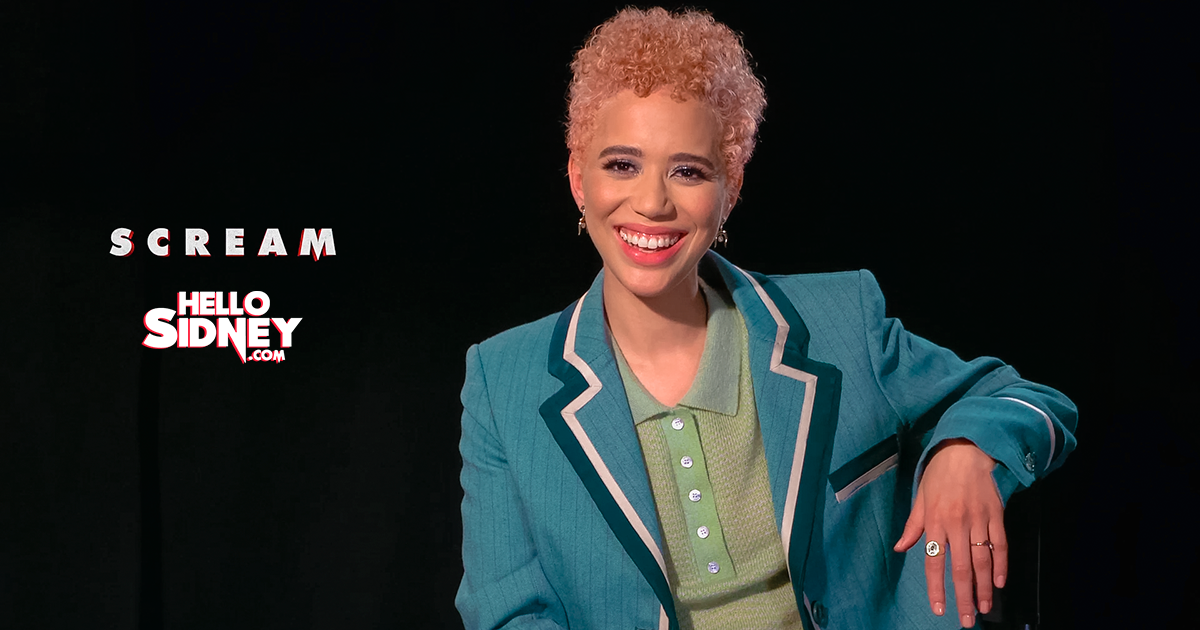The Scream 4 anticipation countdown is in full swing! To celebrate, A&E BIO Channel will premiere an exclusive documentary, Scream: The Inside Story, on Wednesday, April 6, at 8 P.M. ET / 5 P.M. PT, with re-airings at 10 P.M. ET / 8 P.M. PT. This special explores the groundbreaking making of the original Scream (1996), delving into how Kevin Williamson, Wes Craven, and an exceptional team created a genre-defining classic.
We teamed up with Scream Franchise Examiner’s John Valeri to bring you an exclusive interview with the talented team behind this highly anticipated documentary: Daniel Farrands (Producer, Director), Thommy Hutson (Producer, Writer), and Lito Velasco (Associate Producer). Known for their acclaimed work on Never Sleep Again: The Elm Street Legacy, they aim to deliver another masterpiece, shining a light on the challenges, triumphs, and legacy of Scream.
This interview was so insightful that we’ve split it into three parts! In this first installment, the creators discuss how Scream revolutionized horror, their favorite scary movies, and the challenges of compiling this definitive retrospective.
1. Since the premiere of Scream fourteen years ago, what do you think have been the biggest evolutions in the horror genre, and how did the first three movies evolve in their own right? Also, what are your expectations for the fourth film?
Dan: There is no doubt horror came back in a big way since the success of the original Scream. Not only did it open the floodgates for a series of imitators (Urban Legend, Valentine, etc.) it also made Hollywood stand up and take notice of a genre that had more or less fallen by the wayside. It certainly paved the way and opened doors for a new generation of genre filmmakers, so in that sense Scream really was a watershed film.
Like all successful films, Scream was inevitably followed by lesser sequels, although from a financial standpoint they’re almost equally successful, which goes to show that the audience had an appetite for more. I think the return of familiar characters are what made the sequels appealing, not to mention the fact that in each subsequent film there was a kind of race to see which “hot” TV star would be featured (and of course killed off). But the triumvirate of Neve Campbell, Courteney Cox and David Arquette certainly was part of the series’ appeal.
Thommy: One of the biggest evolutions in the genre, something that Scream took to a level not really seen before it, is the concept that the characters know of, understand and reference genre movies; they are aware of the conventions of which they’re part…yet it often doesn’t help them — though they should “know what to do!” It’s an interesting concept in that what “Scream” did was showcase a cast of characters who, though they live in the “real world,” seem to live their lives as if they’re in a movie. Of course, that backfires when they learn that true violence is not the over-the-top cartoonish idea they believe it to be; instead, it’s bloody, tragic and painful.
Lito: I’d say basically the horror genre evolved in the sense that the self-aware/reflexive style gave way to new trends that were also used ad infinitum. Remember the Asian-cinema influenced hits like The Ring and The Grudge and all their imitators? After The Sixth Sense, there was a time where every “horror” film released seemed to be a ghost story. And certainly we’ll never forget the popularity of over-the-top gruesome films like Saw and Hostel and their lesser imitators (Captivity, anyone?). Finally, the remake craze seemed to have a stranglehold on American horror for the past few years.
I personally hope “remake fever” subsides and we see more original horror. And I’ll take a well-crafted sequel to my favorite films or franchises any day rather than a “reboot”. On that note, I have very high expectations for Scream 4: the fact that the key creative members are once again returning both in front of and behind the camera fuels that anticipation. But I’m also hoping the film has the more foreboding and ominous tone of the first and second films in the series. Don’t get me wrong, I love all the films, but Scream 3 felt like it descended too much into self-parody; I’m really hoping for a darker sequel this time around.
2. What is your favorite scary movie, and why?
Dan: Like Kevin Williamson, without a doubt it would be Halloween. It’s the first slasher film that not only scared the pants off of me, it also inspired me to want to make films. And I am one of the lucky few, though I say it with a hint of irony, who got a chance to touch the Holy Grail when I was chosen to write the 6th film in the Halloween series when I was only 24. So absolutely: Halloween was and always will be the definitive scary movie to me.
Thommy: Naming only one is tough as there are so many that have influenced me: the characters as their worst enemies in Night of the Living Dead, the suburban terror of a very real “family-next-door” in Poltergeist and the really scary, creative and ingenious concept of A Nightmare on Elm Street (though Wes Craven’s New Nightmare is tied with that one) and the clever, funny and really scary movie that felt like it had kids I knew, Scream (of course!). I failed to answer your question, I know…then again, I am not surprised: I think I am the only member of this project whose favorite movie is probably Pretty in Pink or The Breakfast Club! (is there anything more horrifying that puberty?)
Lito: Like Dan, as much as I adore A Nightmare on Elm Street, Halloween takes the top spot for several reasons. First, despite its very minor flaws and gaffes, it really is a superbly-crafted film. Second, having grown up in the Midwest suburbs, I easily related to the setting and thus the horror. Lastly, it imprinted on me at a very young age: my babysitter let my sister and I watch it. I’ll never forget seeing it for the first time and thinking, “Those kids and babysitter are in the Midwest in October…watching horror movies…the Boogeyman is right outside their door and they don’t even know it. Wait…that could be us!” Again, I was young and couldn’t quite distinguish the line between reality and fiction. From that day on, I was hooked on horror for life. And if Psycho is the Grandfather of modern stalk-and-slash films, then Halloween is the Father, and how could I not absolutely and unconditionally love the seminal film that started the horror craze that inundated my childhood and teen years?
3. What was the biggest challenge in compiling previous Scream documentary material and obtaining the new material as well?
Dan: The biggest challenge in terms of acquiring material was that the ownership of the Scream films is extremely convoluted, and this was compounded by the fact that while we were in production the entire Miramax library was being sold off by its then-owners (The Walt Disney Company, no less) to a new group of investors. It literally took months of sitting back and waiting to see how and if the sale of Miramax was going to be handled. And it took several more months of waiting, back and forth communicating and finally negotiating with the new owners to get permission to use the film footage and archival materials. And all of this while we were on a pretty tight deadline to deliver the show BIO Channel. It was a big leap of faith to even start the show knowing that any time the house of cards could have toppled. Fortunately, the new owners of Miramax really loved what we were doing and made it possible for us to have access to all of the materials that we needed.
Lito: On any project like this, there are always several challenges to overcome, not the least of which is booking the talent and procuring archival material. We owe a big “thank you” to the new owners of the Miramax library, the fine folks at Dimension Studios (a huge shout out to Pantea Ghaderi), and of course Wes Craven and Bob Weinstein. And a special “thank you so much” to all the fans who graciously responded to our “call to arms” to submit any rare materials they had access to.
4. What kind of message does this documentary send to audiences that previous documentaries have not regarding the Scream series?
Dan: I’m not sure what kind of message it sends, but it certainly tells the most complete story of the making of the original film. We touch on the sequels, including the genesis of SCREAM 4, but it’s really the story of a struggling screenwriter, a director in need of a hit and a maverick studio who came together to create cinematic history. It’s a very respectful and, in a way, nostalgic look back at a horror film that came out of the blue and took everyone by storm.
Thommy: I think while there have been stories here and there about the difficulties in bringing the project to life, what we’ve been able to do is allow audiences to hear first-hand, from Wes Craven, Bob Weinstein and many other cast and crew the real inside scoop on what it was like to bring the film to life: the genesis, the difficulties and the unexpected, wild success. The documentary brings to light the true road that “Scream” took to become the icon in the genre it has become. It wasn’t always easy, but listening to cast and crew tell their stories it was definitely worth it. They created what has become a film that transcended one genre and one audience.
Lito: Well, while we do touch very briefly on the sequels, our doc focuses on the first film. And I think one of the most important messages we’re trying to convey is that no matter what anyone may personally think of the film Scream, they have to recognize the fact that it- like its spiritual forefather, Halloween and any other piece of great American cinema -is a film that really did change the way American films were made and influenced the culture on a deep level and meaningful way.
5. What was the most fun aspect of the filming process for you, as filmmakers?
Dan: The most fun is getting to meet everyone, and in my case reunite with people that I had worked with early in my career (Richard Potter, a former Dimension executive who was involved in Halloween 6 and of course Scream).
The personal connections ran even deeper for me in that I am a graduate of Santa Rosa High School, which is the same high school where Wes had planned to shoot some of the scenes in the original Scream. A huge controversy erupted in the town over whether or not they should allow a slasher film to be made at the high school, and eventually it turned into a legal case about First Amendment rights. We explore all of this in the documentary, but as much as the Santa Rosa School Board shunned the making of Scream, they couldn’t have been more welcoming to me and my crew to talk on camera about their side of the argument. It felt like one of the rare times where I could use my name to get through the door! But they were very accommodating and it was fun being in the same hallways where I had spent my formative “horror movie” years (and where I had made more than a few student horror films of my own). Many of my teachers at Santa Rosa High were extremely supportive of my horror filmmaking aspirations, so it was quite a surprise to me that they put up so much resistance when Wes Craven came to town. Then again, it was a sensitive period of time in the community because of an actual crime that had recently taken place which is a topic we explore in the show.
Thommy: I really do love the film and the franchise so, for me, it was being able to meet the cast and crew, hear their stories and just get a better, behind the scenes, first-hand account of making a movie that really changed the face of fear.
Lito: Well, I can’t speak for the other members of the team, but my favorite memories from this project are those early days spent in the studio and on location filming interviews with the cast and crew of Scream. Other than that, I love the aspect of being part of one of the key members of a creative team on a show like this. Being a lifelong horror/cinema aficionado and someone with a need to be involved in creative artistic endeavors, it’s always an honor to be asked to participate on a project like this. To be called on to offer my opinions, thoughts, and ideas, and to feel like my voice means something and holds merit when it comes to shaping a film like this is something I treasure.
Stay Tuned!
In the next installment, we’ll delve deeper into their favorite moments from the making of Scream: The Inside Story and more behind-the-scenes secrets.



































